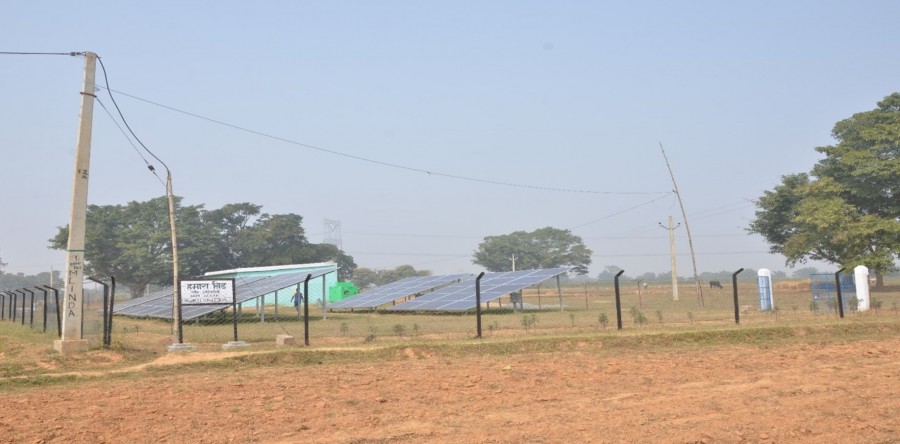We want to achieve universal energy access to affordable electricity by 2030 based on Sustainable Development Goal #7. In practice this means speeding up the rhythm of new connections. Today, we are connecting on average 1.6 Million new homes annually. We need to go up to 14.6 Million homes per year to make sure we bring electricity to 1.2 Billion people who currently live without it by 2030.
In Asia, where the rural electrification is still mainly driven by donor assistance project, we are running the risk of missing the 2030 target. Unless the governments and private sector start working hand-in hand on improving the overall policy and regulatory environment combined with initial SEED capital, rural communities across Asia might remain in the dark well beyond 2030.
Where do we stand now?
Reaching the 2030 target is an incredible endeavour, which cannot be achieved with traditional means. It takes on average 9 years to build a conventional power plant. It is also very costly (22,00 USD per kilometre) to extend electricity grid from central power stations to rural and remote areas where 85% of people without electricity currently live. (for more information, see fantastic fact sheets by PowerForAll) Distributed renewable energy solutions are the answer to this difficult equation. We have the right technology for stand-alone solutions for building mini-grids. The Alliance for Rural Electrification has more than 100 member companies who already execute renewable energy projects in remote areas across the world.
Last week, the Sustainable Energy Centre of Excellence (collaboration between SEAS and ADB) hosted a workshop for government officials from South and South East Asia on “Making Off-Grid Rural Electrification Work” (Materials will be accessible in due time, link will be added here). The workshop, which I facilitated, was a joint collaboration with the Alliance for Rural Electrification and the European Commission’s ElectriFI initiative. It was a fantastic gathering of people passionate for the off-grid projects.
It was also an eye opener on the difficulties of operating, as a private sector company, in off-grid rural electrification landscape of South and South East Asia of today. Why? The following are some key points raised by the speakers:
- We have little evidence of commercially-viable projects to-date in South East Asia today. End-user’s ability to pay is limited, particularly in well-electrified countries where remaining off-grid populations are very rural and very poor (Laos, Vietnam, Thailand, Malaysia).
- Donor/development support is almost always needed in commercial approaches, e.g. Capital subsidy, Pre-development funding and Soft financing. (@Andy Schroeter, Sunlabob)
- Operation and maintenance is not catered for in calls for proposals by donors and governments. Number of installed systems across the region are not working 2 or even 1 year after operation.
What lies ahead?
The future is full of opportunities but stands-alone solutions will be easier to deploy unless governments create better regulatory conditions to speed-up deployment of renewable energy mini-grids. These are some of the arguments that we heard:
- There are some reasons for optimism as technology costs are going down. The Alliance for Rural Electrification has experience with business models for off-grid projects – which need scaling in Asian context. We can build on learnings from other regions, namely Sub-Sharan Africa. For case studies of specific projects see here. (@Marcus Wiemann, Alliance for Rural Electrification)
- Countries are moving from proof of concept towards scale & replication but we are still 3 years away from commercial financing for most of the projects and companies. (@Sagar Gubi)
- We know how to collect payments (little payments, few cents per month) but still, cost-reflective prices of electricity from local users. There are 20 companies worldwide that have proprietary PAYGO technology developed for off-grid solar applications. One of them is Kamworks (@Alan Gonzales).
- And we have great success stories with deployment of readymade systems in Africa: Mobisol and SolarKiosk are some of them.
- We also have examples of successful mini-grid projects in South and South-East Asia: Mlinda’s work in Jharkhand is an example of an engagement strategy with local women groups who are empowered to manage productive activity at the community level. Biomass and waste to energy solutions for off-grid situations can provide grounds for sustainable development in local communities as demonstrated by Ankur Scientific. Rockefeller Foundation focuses on building a market for mini-grids and supports energy services companies for scaling up of mini-grids with telecom anchor loads in India and soon in Myanmar.
What can the governments do?
For stand-alone systems: Focus on quality standards, facilitate mobile payments, support building of local competencies
For mini-grids (@Upendra Bhatt): Establish the true cost of supply with a break-down of Cost of generation, Transmission & distribution; Formalise list of villages to be electrified by off-grid solutions and clarify plans for when on-grid extension happens and Provide regulatory certainty.
What can industry do better?
The industry still has a role play to advance off-grid rural electrification projects in Asia. I take away the following ideas for the Alliance for Rural Electrification to work on:
- Better business models encompassing maintenance and operation for off-grid systems and reflecting each country’s needs
- Innovative financing including better design of calls for proposals for off-grid projects – both at macro level (bringing donors & other interested investors together to design new financing mechanisms) and at project and company level to blend different types of funding available (grants, debt, equity)
- Opportunities for countries to learn from each other – between Africa and Asia and between India and the rest of Asia where market conditions are emerging slower.
So much to do, so little time, get in touch if you are in advancing energy access in Asia or want to join the Alliance for Rural Electrification.



